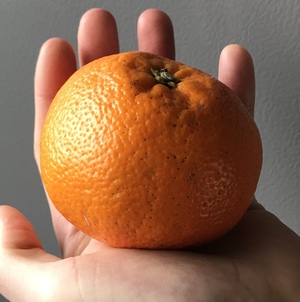2021年01月29日
Head or Tails?
In America and Europe, most coins have a human head on one side. This is called the 'heads' side, and the other side is 'tails'.
When we need to decide randomly between two options, we will flip a coin in the air. Someone will 'call' heads or tails while the coin is still in the air, and which side is facing up when it lands is the decision. This is at the root of several English idioms, such as "it's a toss-up" or "a toss of a coin", to indicate a situation with two equally-likely outcomes.

The technical term for the heads side of a coin is 'obverse' and tails is 'reverse'. Japanese coins don't have heads on them, so coin collectors call the side with the plants or buildings the obverse side.
My students tell me that coin flipping is not a common practice in Japan. Any situation that an American would resolve with a coin toss, a Japanese person would resolve with 'rock-paper-scissors'. Although rock-paper-scissors is now common around the world, apparently it didn't spread outside Asia until the early 1900's.
Thanks for reading!
When we need to decide randomly between two options, we will flip a coin in the air. Someone will 'call' heads or tails while the coin is still in the air, and which side is facing up when it lands is the decision. This is at the root of several English idioms, such as "it's a toss-up" or "a toss of a coin", to indicate a situation with two equally-likely outcomes.

The technical term for the heads side of a coin is 'obverse' and tails is 'reverse'. Japanese coins don't have heads on them, so coin collectors call the side with the plants or buildings the obverse side.
My students tell me that coin flipping is not a common practice in Japan. Any situation that an American would resolve with a coin toss, a Japanese person would resolve with 'rock-paper-scissors'. Although rock-paper-scissors is now common around the world, apparently it didn't spread outside Asia until the early 1900's.
Thanks for reading!
2021年01月29日
The Iyokan and Regionalism in Japanese Food

One thing I love about Japanese fruits and vegetables (and rice) is that you always know where they are coming from, and every region (or Prefecture) seems to have it's own special agricultural products. One of these products is the Iyokan, which I recently discovered and I think they are so delicious. They are like a slightly more sour version of an orange.
While apparently the Iyokan was discovered in Yamaguchi, Iyokan is named after Iyo Province, the former name of Ehime Prefecture, because they were grown in large quantities here after their discovery. In the United States, to many people an orange fruit is just an orange, but here in Japan, I love the variety of orange citrus and their association with the various regions. I can't wait to try more orange fruits while they are still in season this winter.




